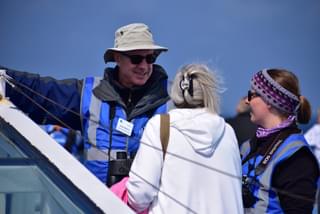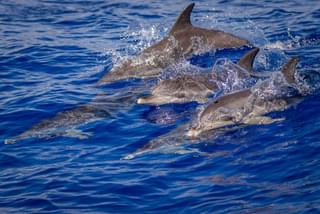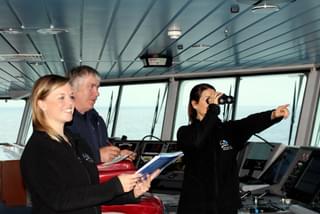Blue whale
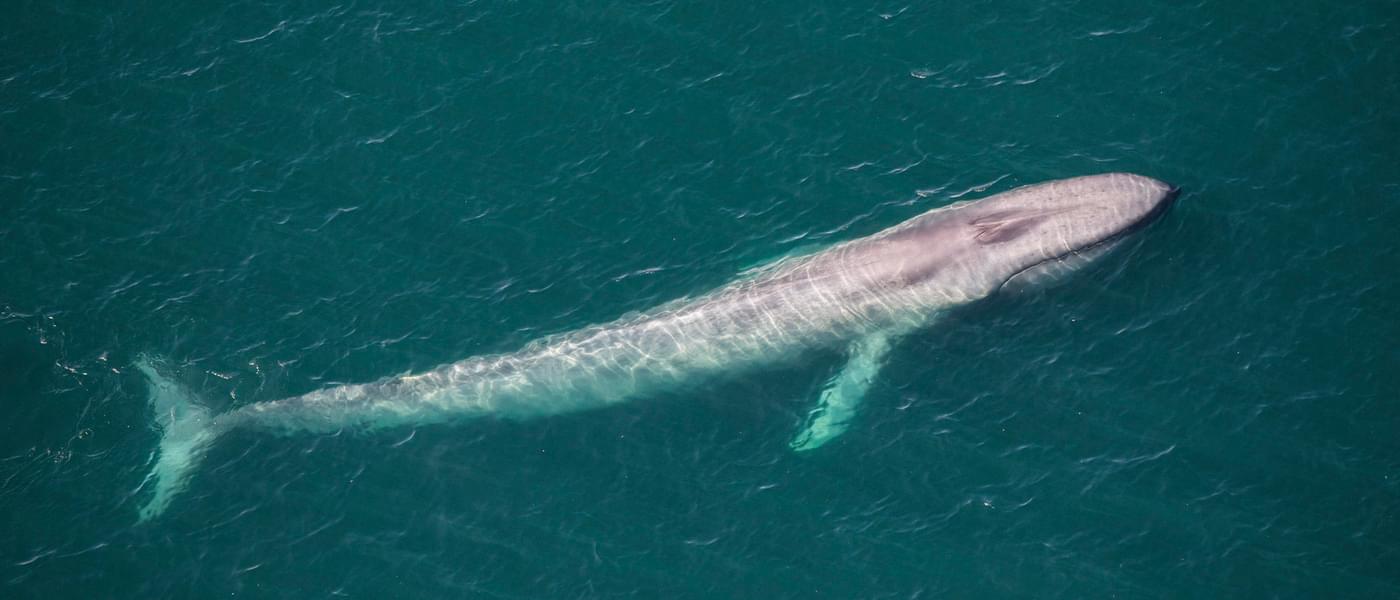
Balaenoptera musculus
23 - 22m
Blue-Grey
Baleen
Dorsal fin
The blue whale is the largest animal that has ever lived on earth, even larger than the biggest dinosaurs. They are the size of a jumbo jet, weigh as many as 2000 people, have a heart as large as a small car and blood vessels that a small child could swim through! They have the tallest blow of all whale species, reaching 10m in height. Contrary to the name, they are more grey than blue and have lighter small spots over their back. They have a small dorsal fin, set well back on their body; it is not visible at the same time as the blow hole.
Key features
- Hige ~10M tall, dense blow
- Tiny dorsal fin when compared to the body
- Mottled blue and grey colouration
- Raises tail fluke on a deep dive
Behaviour
The blue whale usually travels alone or in pairs, sometimes larger groups are sighted in feeding areas. When surfacing, the huge blow appears first, followed by a slow, prolonged roll of the back. Eventually, the small dorsal fin appears, followed by the tailstock and fluke, which appears on a deep dive. Although they are the biggest animal, they feed on one of the smallest animals in the ocean, krill (like small shrimp). They need to eat 4 tonnes or more each day. This equates to around 4 million krill!
Threats
Historically blue whales had avoided being hunted thanks to their huge size and fast swimming speed. However, after the explosive harpoon gun was invented they became a hunting target for meat, oil and other body parts. They were given protection in 1966 after their populations became severely depleted. Populations are starting to recover, however progress is slow given the slow reproduction rates of the animals. Blue whales don’t reach maturity until they are 7 years old and have one calf every 2 – 3 years. Today the primary threats are ship strikes, noise and chemical pollution.
Distribution
Blue whales have a worldwide distribution some populations migrate between low-latitude winter breeding grounds to high-latitude summer feeding grounds.
Gallery
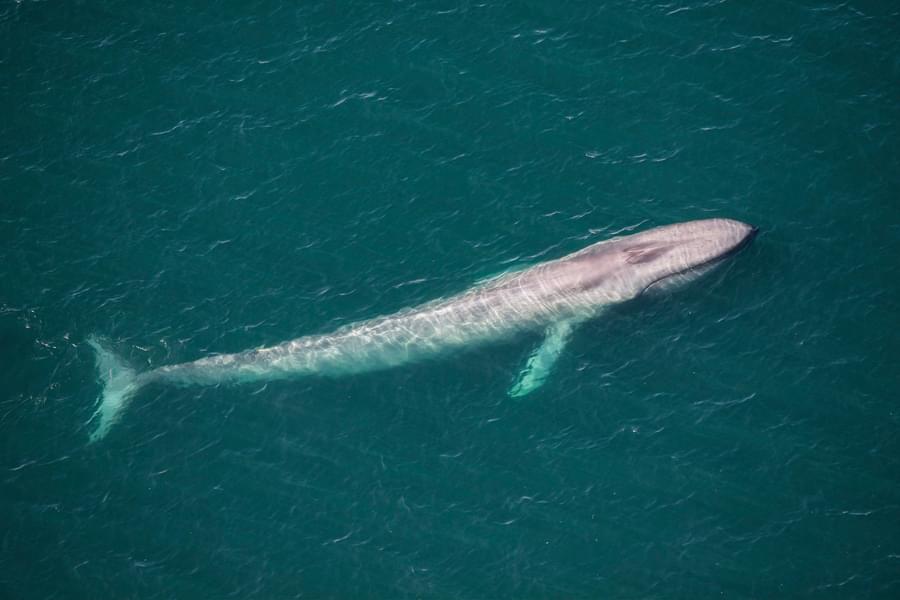
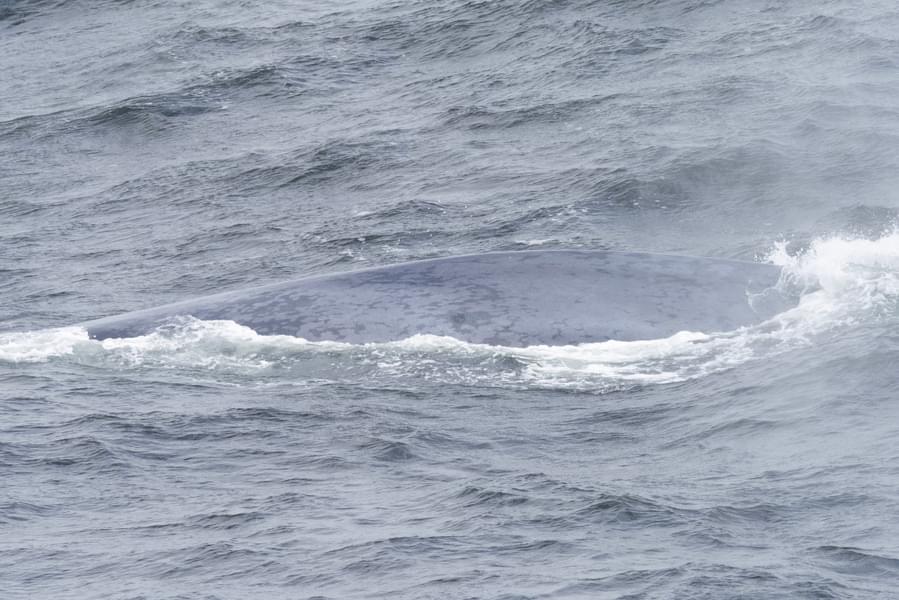
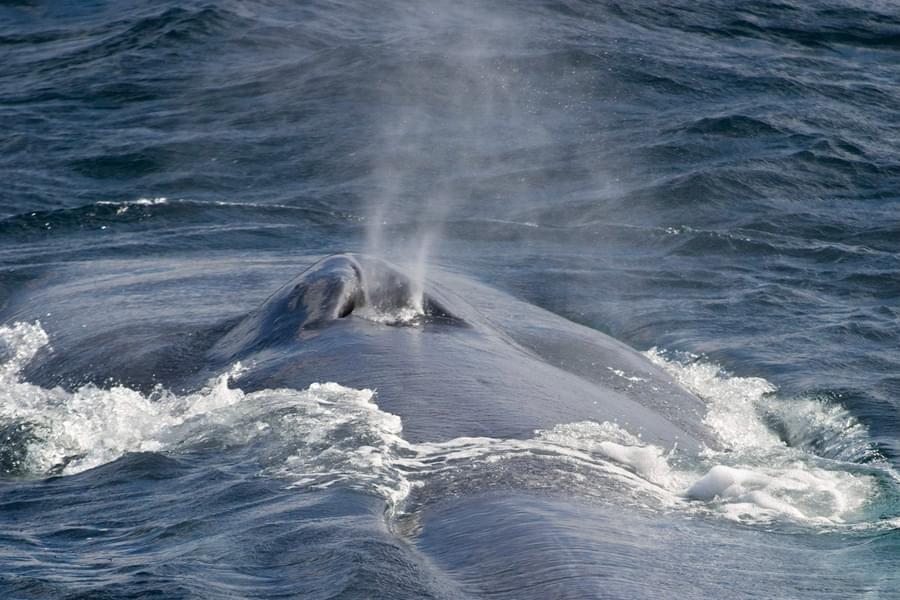
.jpg?w=900&h=600&q=85&auto=format&fit=crop&dm=1683137512&s=77dbc37ce8c6d4dcf1179b023e4a57bd)
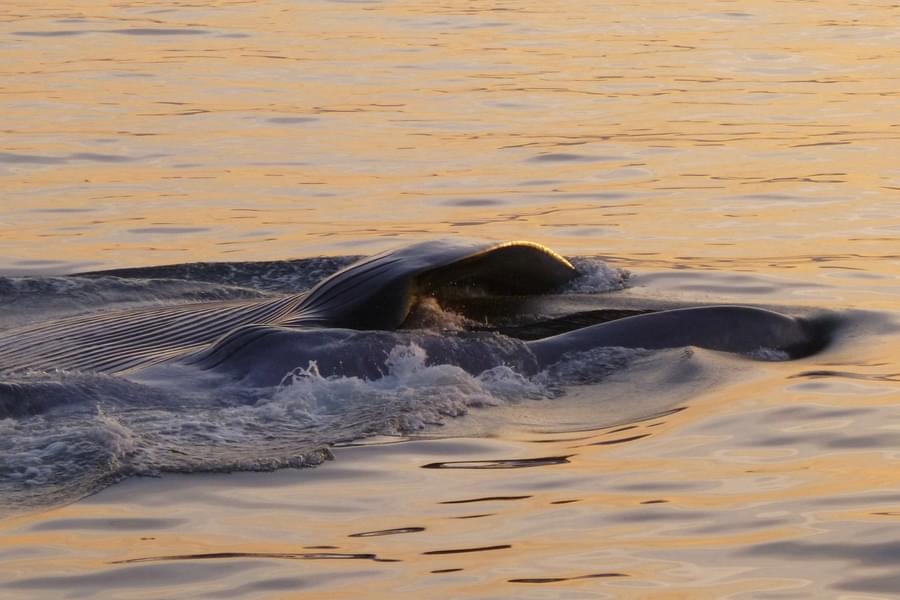
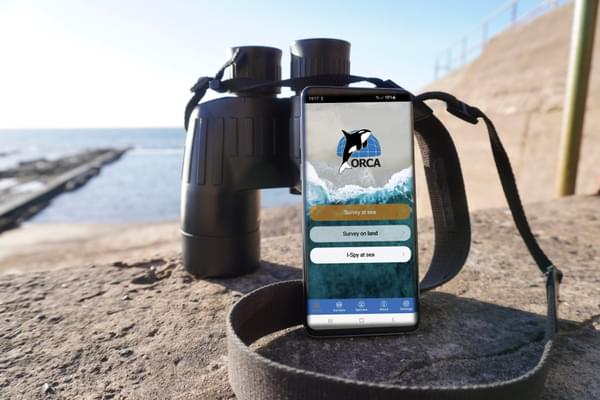
Study whales and dolphins as an ORCA OceanWatcher
The ORCA OceanWatchers online training course, along with a bespoke app, will enable everyone to collect data about whales, dolphins and porpoises. And it can be collected from anywhere that you can see the sea - whether that’s from your local beach, on holiday at the coast, scanning the seas from a cruise ship, travelling via ferry, or from your own boat.
You may also be interested in

